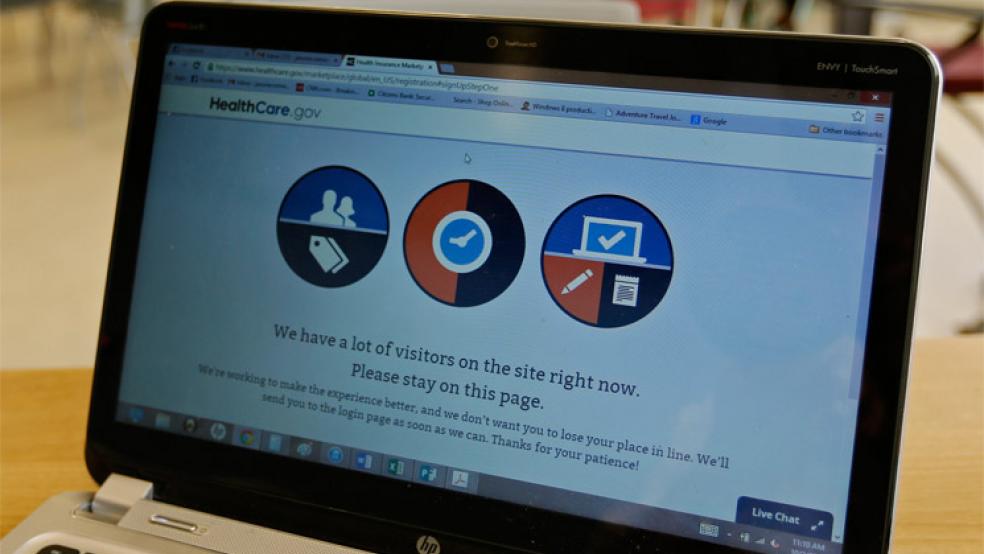The final enrollment deadline for getting Obamacare coverage this year is coming up at the end of March. If you’re still thinking about signing up, or plan to, you’re going to need to do some math.
Of course, nobody likes doing the gnarly math when picking an insurance policy. It would be great if the Obamacare exchanges all offered a flexible calculator to do this, but they don't, so you have to crunch the numbers on your own.
Fortunately, the math involved is arithmetic and not calculus or statistics, although I think some background in those areas wouldn't hurt. When I was applying for a policy through HealthCare.gov recently, I could see where some higher math would help.
By contrast, the tool on HealthCare.gov offers no meaningful help: It's a video accompanied by the standard trade-off language of insurance. You will pay higher premiums to cover more out-of-pocket expenses and vice versa.
So how do you make the decision on how much to pay in out-of-pocket expenses vs. in premiums? You need to make some customized calculations to do this, then see what policies may work for you from the plans offered through the exchanges.
I suspect that most people only look at premiums to make a decision. Research on behavioral finance has shown that health care consumers often make the wrong choices in selecting policies. They choose the lowest-possible premium and pay higher out-of-pocket costs with higher-level plans.
Related: Obamacare Penalty: 4 Things You Don’t Know
The way the ACA plans are tiered, you are offered catastrophic, bronze, silver, gold and platinum policies. The more "precious" the metal, the higher the premium and the lower the out-of-pocket outlay.
There is a systematic way of approaching buying a policy, although it's highly counterintuitive. The first consideration isn't the premiums or out-of-pocket tallies on the plans you're considering, it's what you've already spent money on — or could spend.
Let me explain. Your policy should be tailored to where you spend the greatest amount of health care dollars. Are you a frequent emergency-room patient? Do you have a bad back that requires constant chiropractor visits? Do you mostly need help with prescription drugs? Are you battling cancer or diabetes?
While most basic services are covered, how much you will pay is dependent upon the policy you choose, the level of coverage and how you spend your health care dollars. You could be paying a fortune out of pocket depending upon how you consume health care.
Out-of-Pocket Protectors
When I was surveying available policies for my family of four (two adults over 50 and two teenagers), like most people I initially eyed the policies with the cheapest premiums, which, for us, started in the bronze level.
For $662 a month, one Blue Cross/Blue Shield plan (in Illinois), offered a preferred provider organization. If providers were in the network — it was more expensive if they weren't — Blue Cross would fully cover all expenses after a yearly family deductible of $12,700 was met. Under that amount, 60 percent of expenses were paid for in this bronze plan.
There was a catch, though: After a deductible was met, there would be a 20-percent co-insurance fee for doctor's visits. So let's say that our doctor charged $100 per visit. Before the deductible, the insurer would pay $60 and we'd be on the hook for $40. After the deductible, we'd still have to pay $20 a visit.
All of the policies I surveyed on the bronze level had some sort of "gotcha" that involved additional out-of-pocket costs. Some policies charged 40 percent co-insurance for specialists; others for generic prescription drugs. And the co-payment varied. One higher-premium policy charged a flat $100 for specialists and a 40 percent co-payment for generic drugs.
Related: 10 Top Questions Consumers Ask About Obamacare
While you can interpret the co-payments as dis-incentives to use certain kinds of care such as specialists, it's just a device that insurers use to balance out the cost of claims.
For your purposes, you will need to audit the kind of care you're likely to purchase. If you use a lot of specialists, you'll want to avoid policies with high co-payments. Look at the number of visits you make annually and figure how much you will spend out of pocket.
Depending on what you utilize, you can either pick a policy that doesn't penalize you for the kind of care you're likely to use — or pay a higher premium that will absorb these costs. In either case, you'll need to compare your total out of pocket costs with the higher-policy premiums.
Here's an example: In a normal year, our family pays about $2,500 in out-of-pocket costs — mostly for doctor's visits and tests. A bronze-level policy would cover $1,500 of that, all of which would fall under the $12,700 maximum for most of these policies.
To avoid the potentially costly co-payments on physicians, we'd have to spend $1,000 a month in premiums in a policy that would suit our present needs — about $300 more a year than we're paying now. But the difference between our present premium ($7,200) and the higher HealthCare.gov policy is $4,800, so we wouldn't save any money.
At the very least, HealthCare.gov should provide a decent calculator to walk you through all of this. A study published last year through the University of Pennsylvania found that providing some assistance to policy buyers could save some $10 billion a year.
The researchers asked participants to select the best policies on the health care exchanges. Most of them paid too much attention to out-of-pocket costs and deductibles, which would lead to overspending in the long run. Most of those surveyed had no idea "they were performing poorly."
"However, performance can be improved quite markedly by providing calculation aids and by choosing a `smart' default," the researchers found.
To be fair, state and federal governments offer "navigators" who can help you do this one-on-one, which is a better idea for most insurance-befuddled folks. We plan to avail ourselves of this service and will report back to you next week.
Top Reads From The Fiscal Times:






